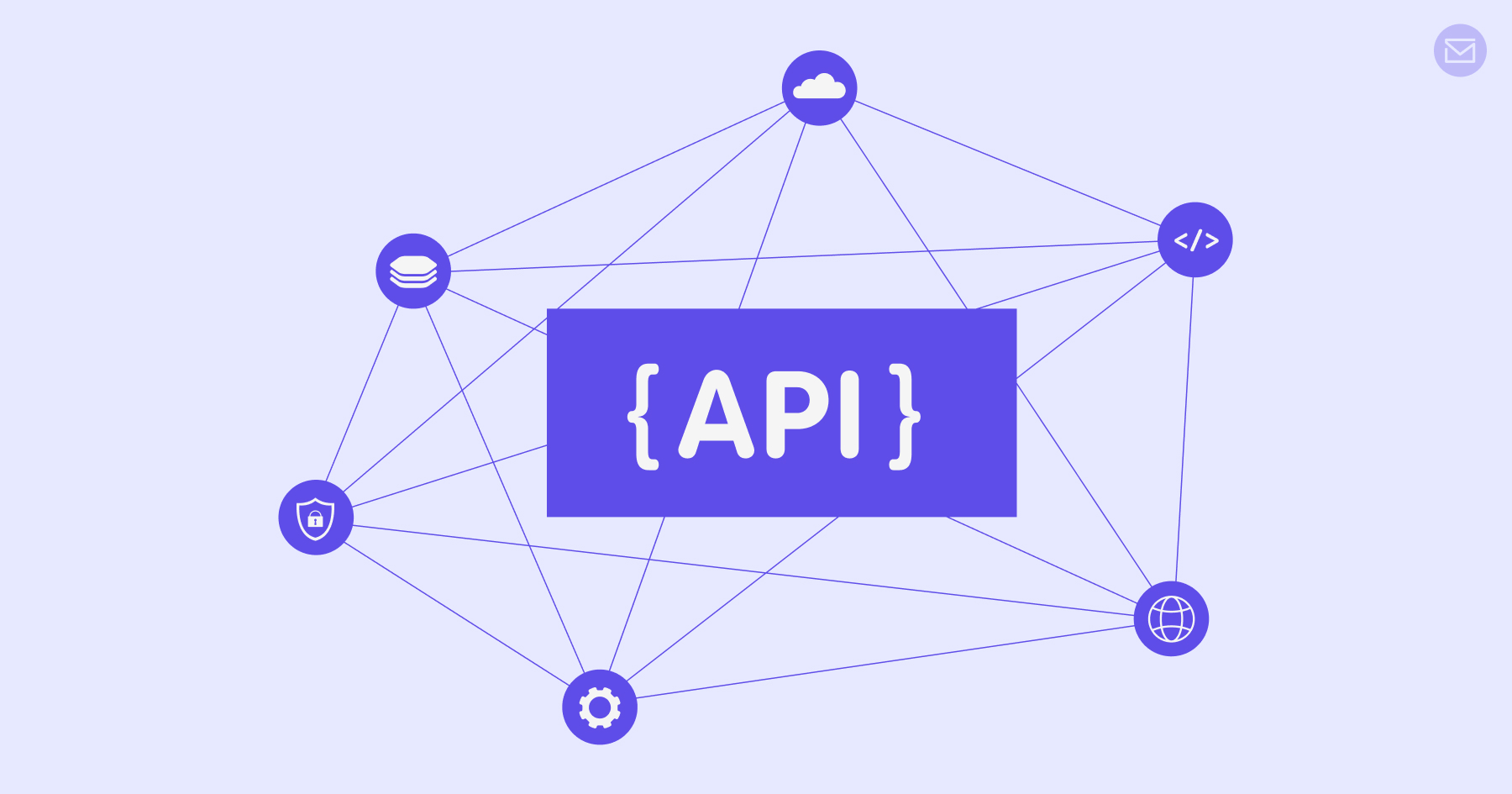
Emails aren’t just tools for your marketing team to maintain engagement—they are the backbone of your product’s functionality.
How do users receive their passwords when they sign up on your platform or notifications like shipping details triggered by their actions?
The irreplaceable soldiers working in the backend are email APIs.
In this article, we’ll explore what email APIs are and how they work to enhance product efficiency and user experience.
An API (Application Programming Interface) allows two or more technologies to communicate with each other. It’s a set of commands that processes requests and returns responses in real time
In simpler terms, it’s like a waiter in a restaurant who takes your order, delivers it to the kitchen, and then returns with exactly what you requested.
An email API allows you to borrow features from an email service provider and integrate them directly into your application. This means you don’t have to rely on separate tools to send emails—you can embed those capabilities right into your system.
All modern applications rely on multiple APIs, each designed to perform a specific function.
Use Cases for Emails APIs
Send transactional emails
Design and edit email templates
Shoot bulk campaigns
Analyze key email performance metrics.
There are two types of email APIs that you can include in your application.
1. TThere are two primary types of email APIs you can include in your application:
These APIs send purpose-built notifications to users, such as password reset links, newsletters, or action-based triggers.

Contextual APIs support email synchronization, data transfer, and analytics. They help improve connectivity and reporting between systems.
Because email APIs connect directly with email servers, they reduce unnecessary back and forth, speeding up message delivery.
Integrating APIs allows you to personalize notifications and enhance analytics using contextual data.
Email APIs ensure reliable delivery even during technical issues or outages. They also provide real-time visibility into delivery status.
API integrations require encrypted keys, ensuring secure data transmission between sender and receiver. This encryption minimizes risks of phishing and spam attacks.
Email APIs provide insights into metrics like delivery rate, ISP rejections, click rate, and open rate, helping you optimize campaigns effectively.
Most email APIs are ready to use and designed for quick integration, minimizing configuration errors and saving time.
Implementing email APIs requires at least one technically skilled team member who can handle integration and maintenance.
APIs need regular monitoring, updates, and maintenance to ensure consistent performance. Staying up to date with provider changes is essential.
The best solution is to use an email API provider like SendPost. The team at
The SendPost team built an easy-to-integrate email API that’s simple to integrate. After a one-time setup, you can count on SendPost to deliver your emails fast and reliably. No deliverability issues or delayed emails.
With SendPost, you can:
Access native API SDKs in multiple programming languages (NodeJS, PHP, Python, Ruby, Java, C#, Golang, Rust, and more).
Send emails from your domain using SPF, DKIM, DMARC, and TRACK records. Start with shared IPs or scale up with dedicated IPs.
Retrieve detailed analytics like deliverability, bounce, open, and click rates via APIs or webhooks.
Let’s break down the process step-by-step:
A user performs an action, such as clicking an order button.
The application triggers an API in the backend linked to that button.
The API gathers relevant parameters and sends them to the server.
The server processes the request and retrieves the required data.
The API returns the response, displaying it to the user.

Pricing depends on email volume and feature requirements. Choose a provider that offers transparent pricing and scalability without compromising performance.
Look for a well-documented API library that supports multiple languages to speed up implementation and simplify development.
Select a provider with proven, high delivery rates. Reliable vendors share these stats publicly rather than keeping them hidden.
Opt for a provider with 24/7 technical support and a reputation for responsive service.
Ensure that the APIs are supported with clear, developer-friendly documentation. This reduces integration time and dependency on external help.
Comprehensive analytics are crucial for tracking performance and making data-driven improvements to your email campaigns.
It will empower you to improve your email performance.
Absolutely. Email APIs can support a variety of use cases such as:
Real-time login notifications.
Password reset links.
Purchase confirmations and receipts.
Shipping updates.
If a simple integration can increase your delivery rate to over 99%, then it’s totally worth it.
The effects will trickle down to better conversions and customer experience.